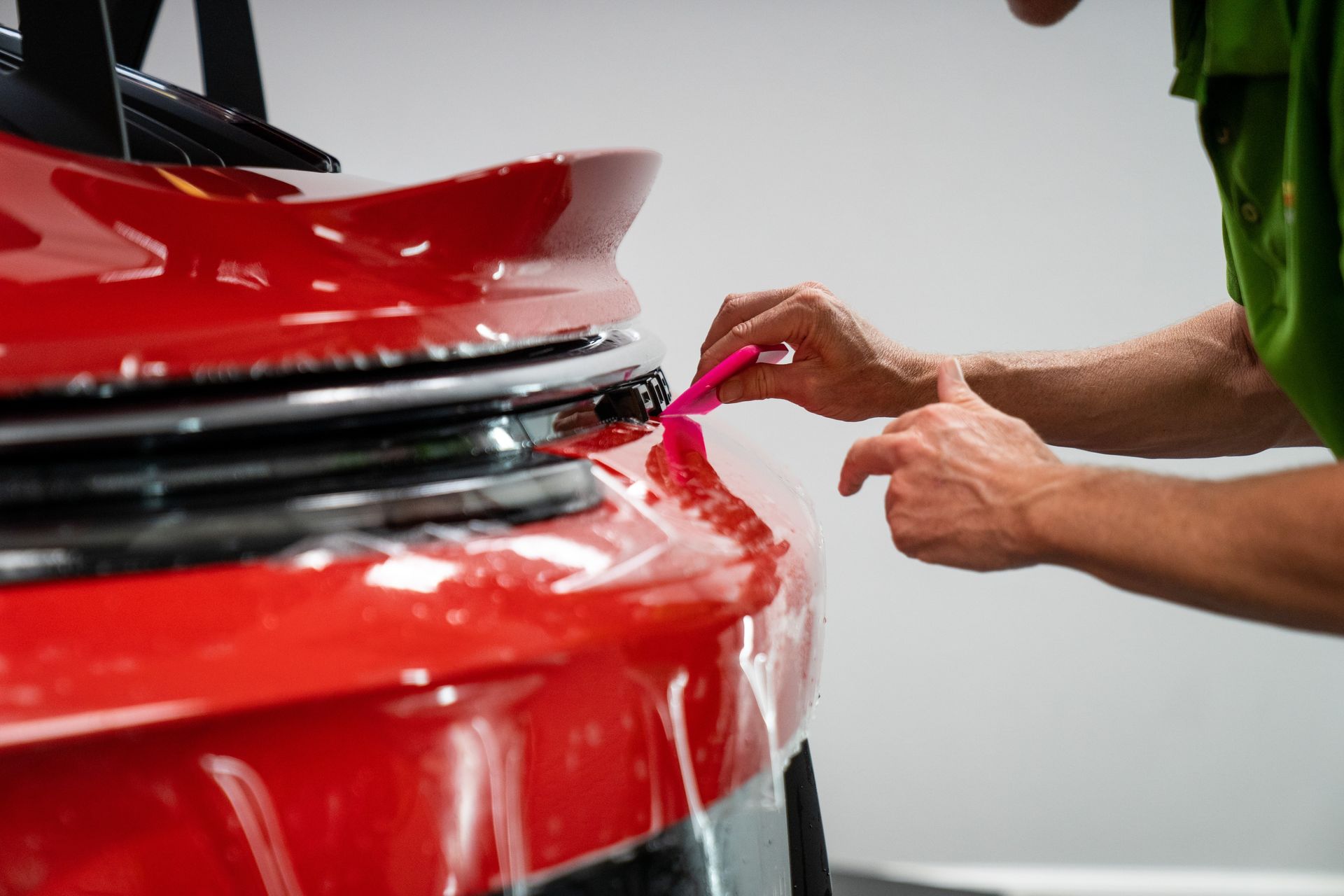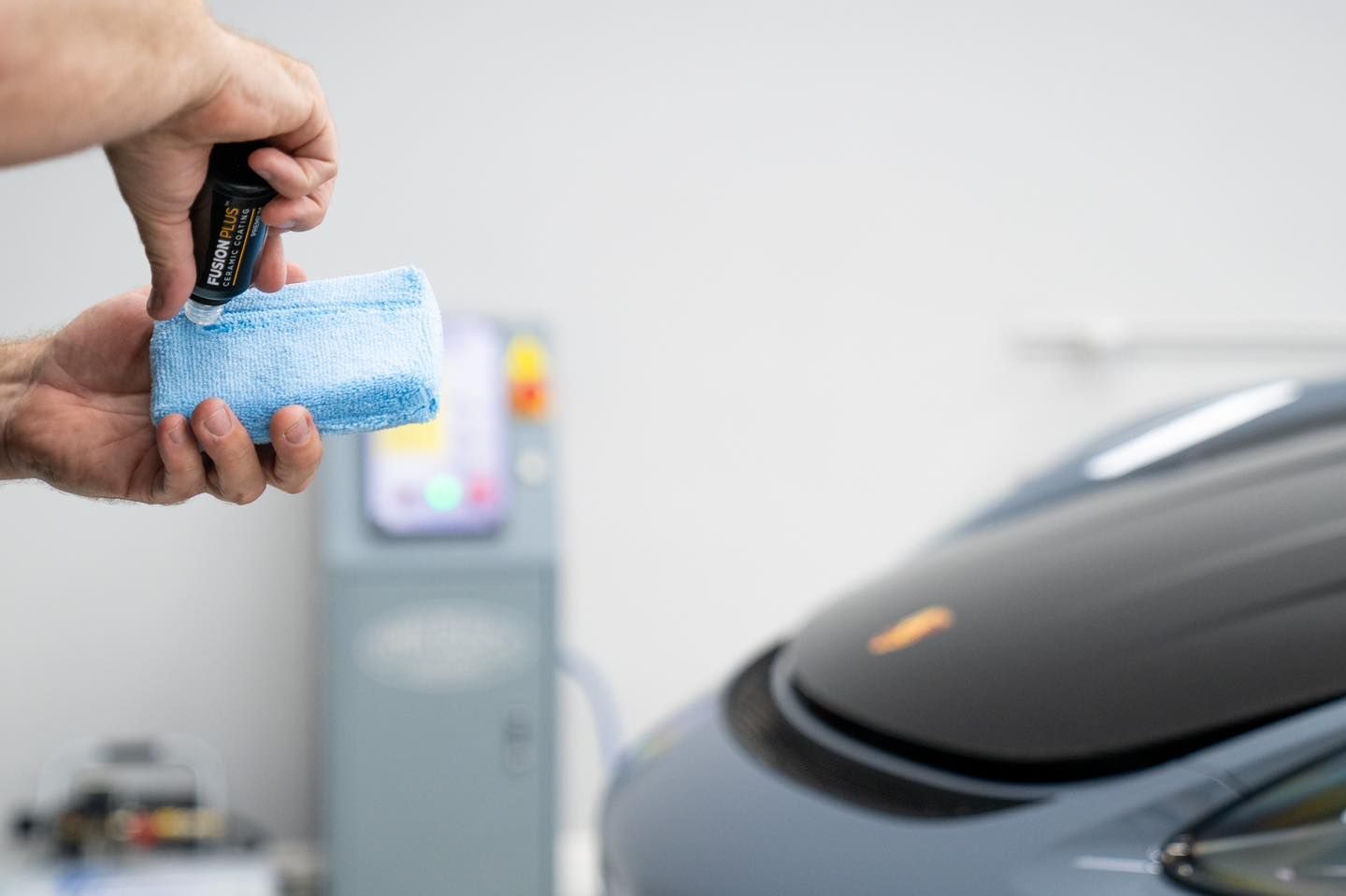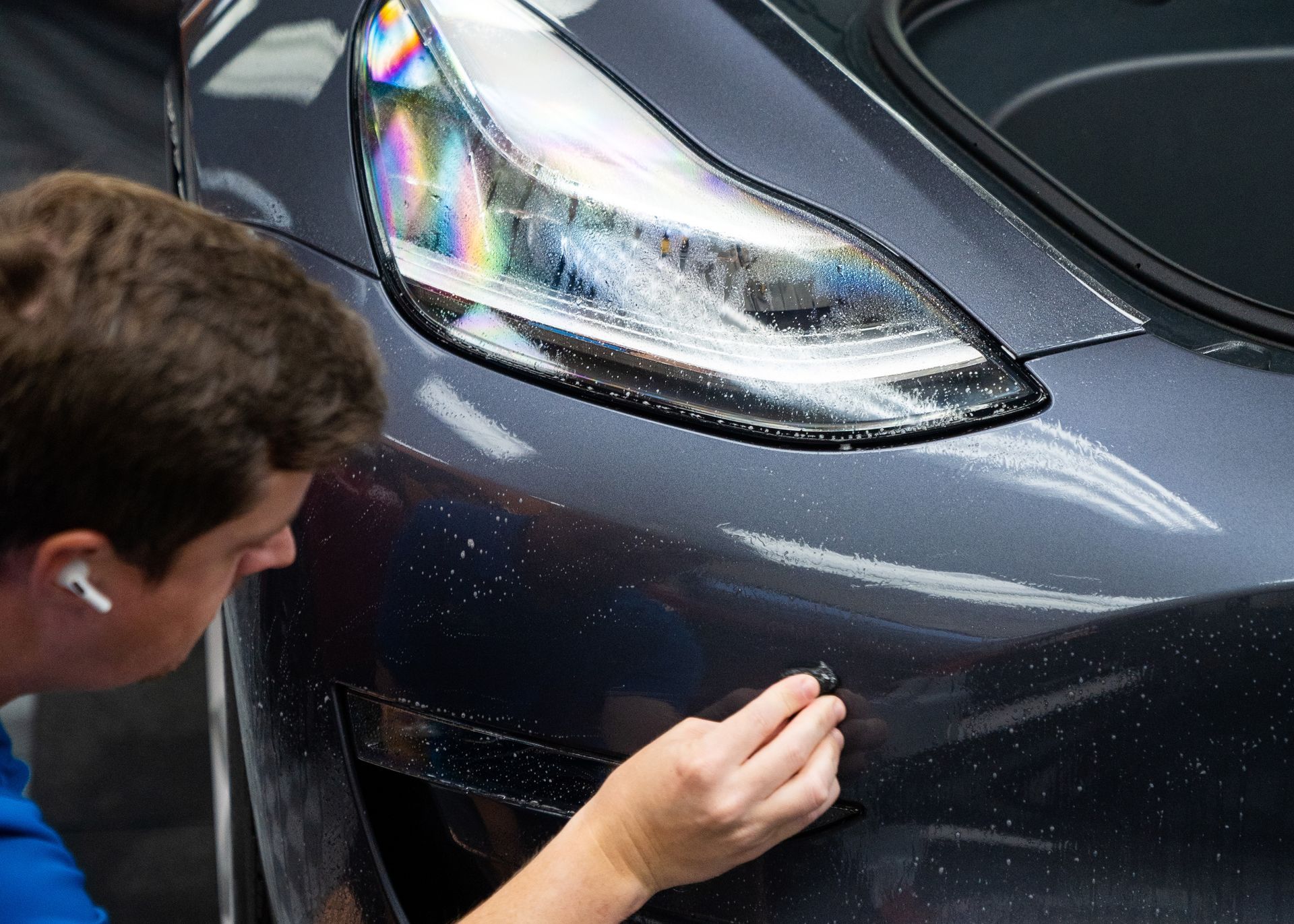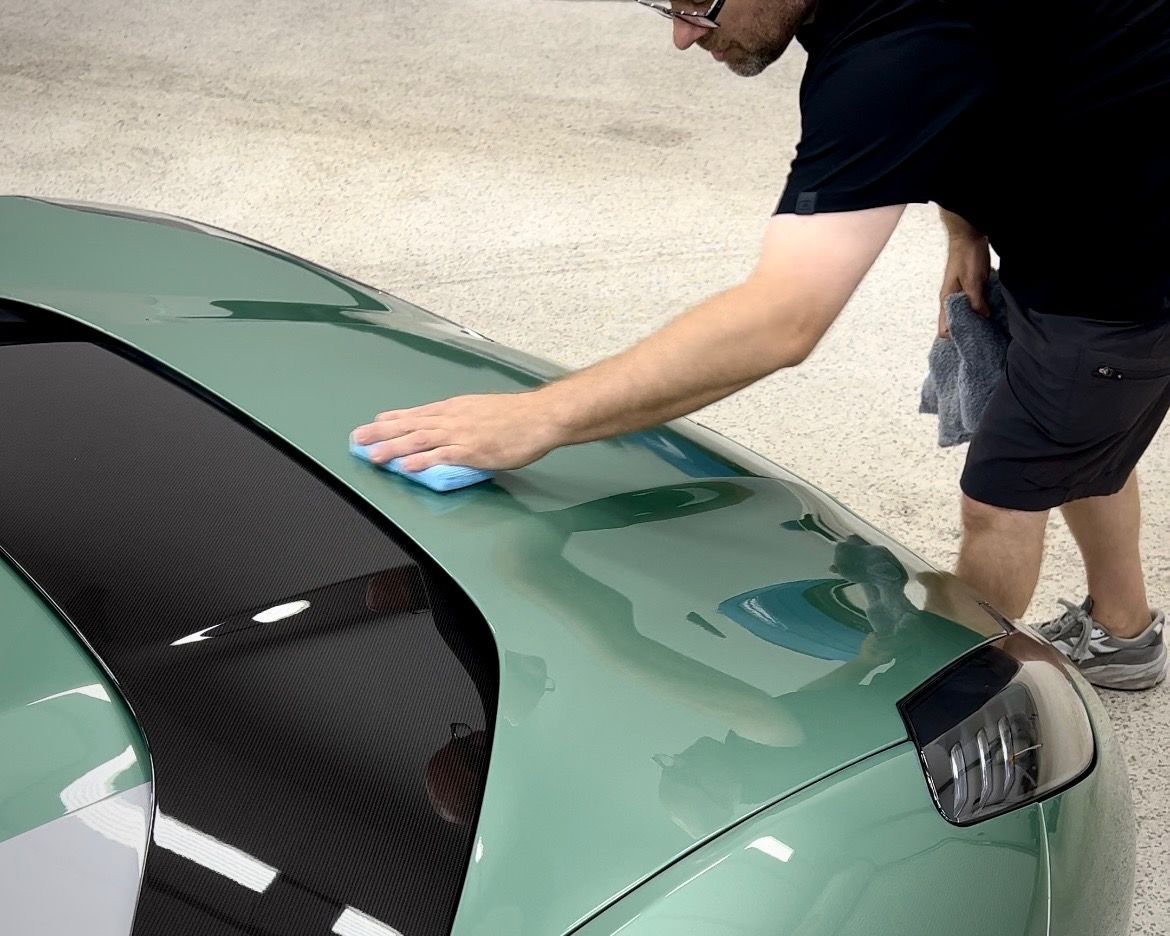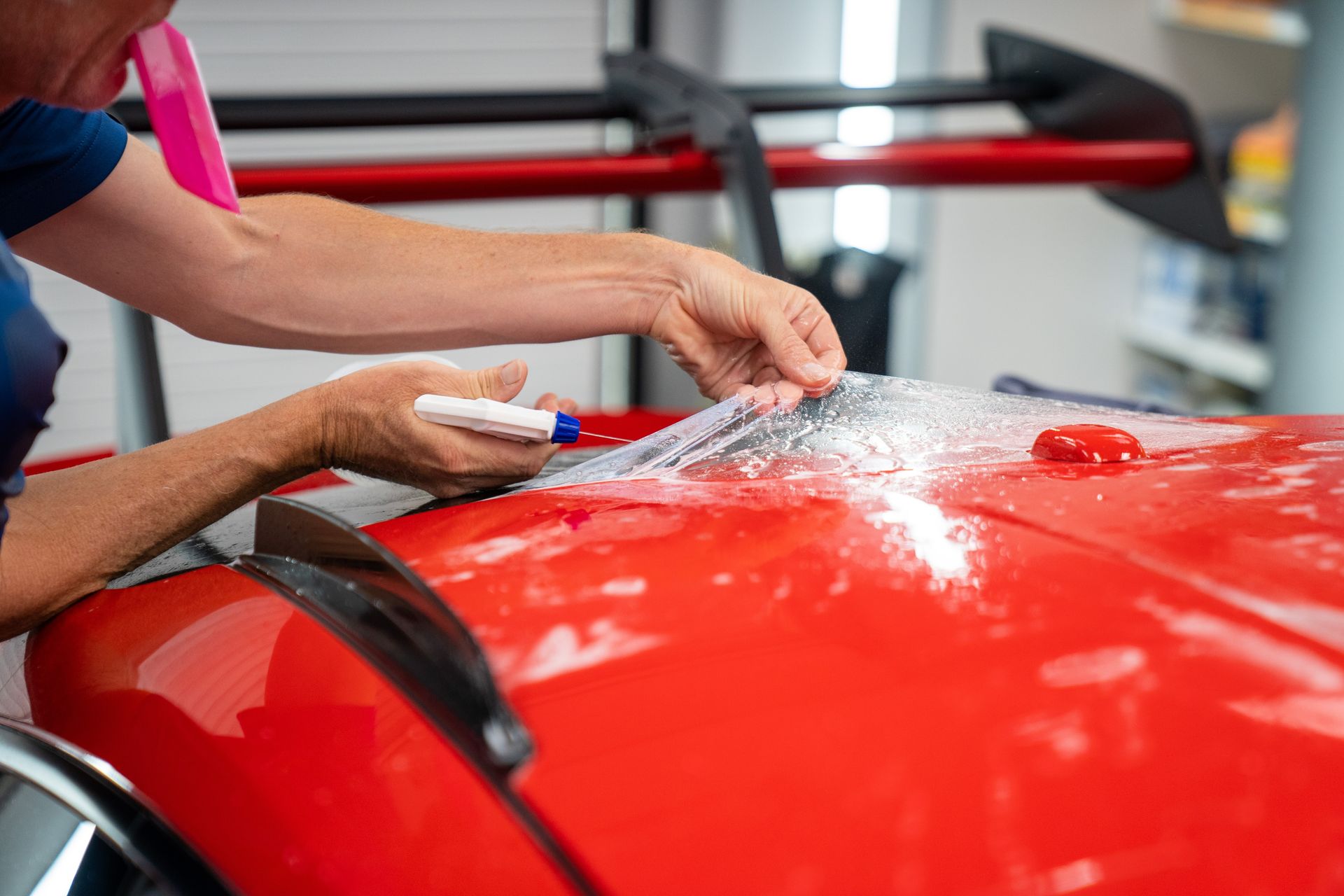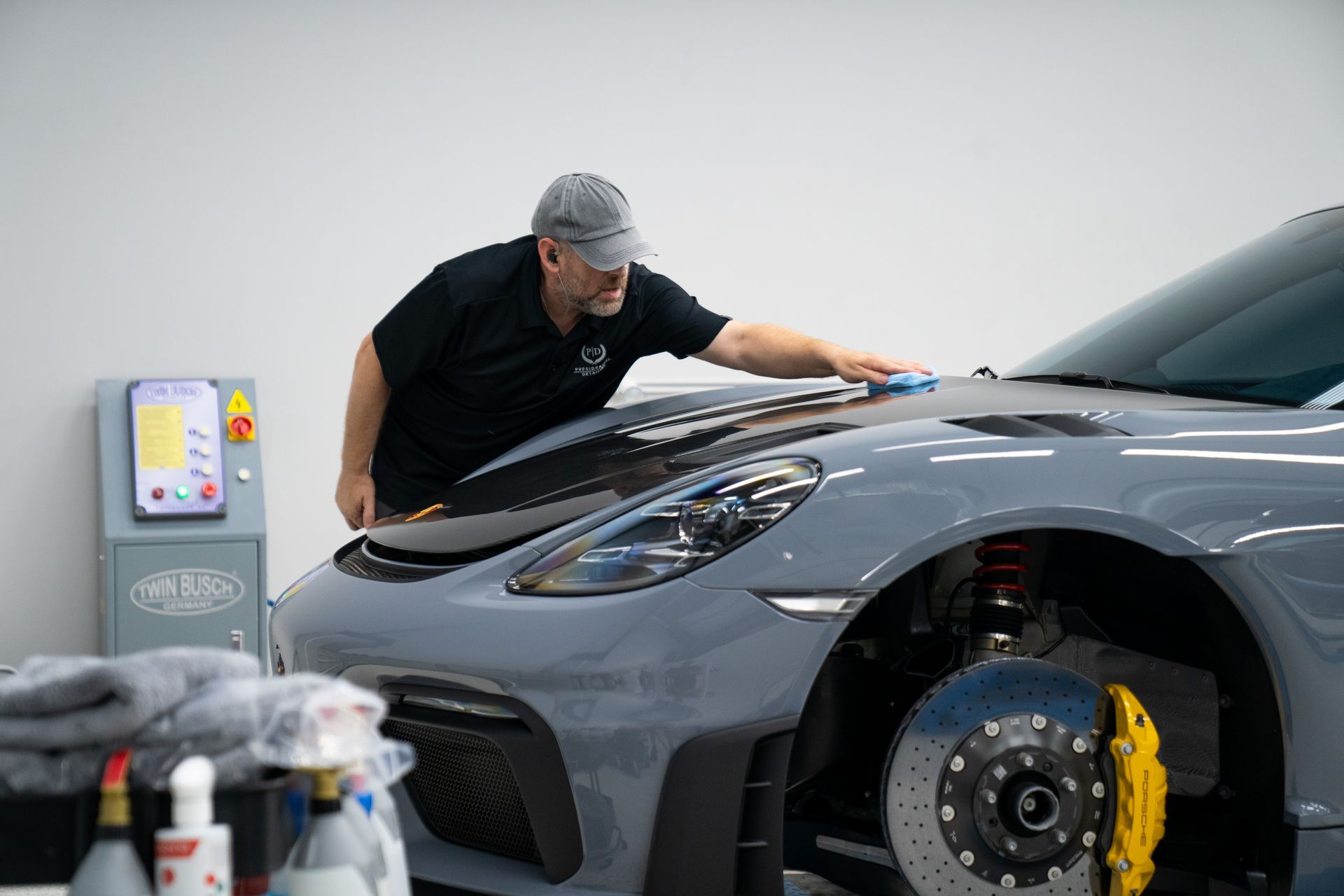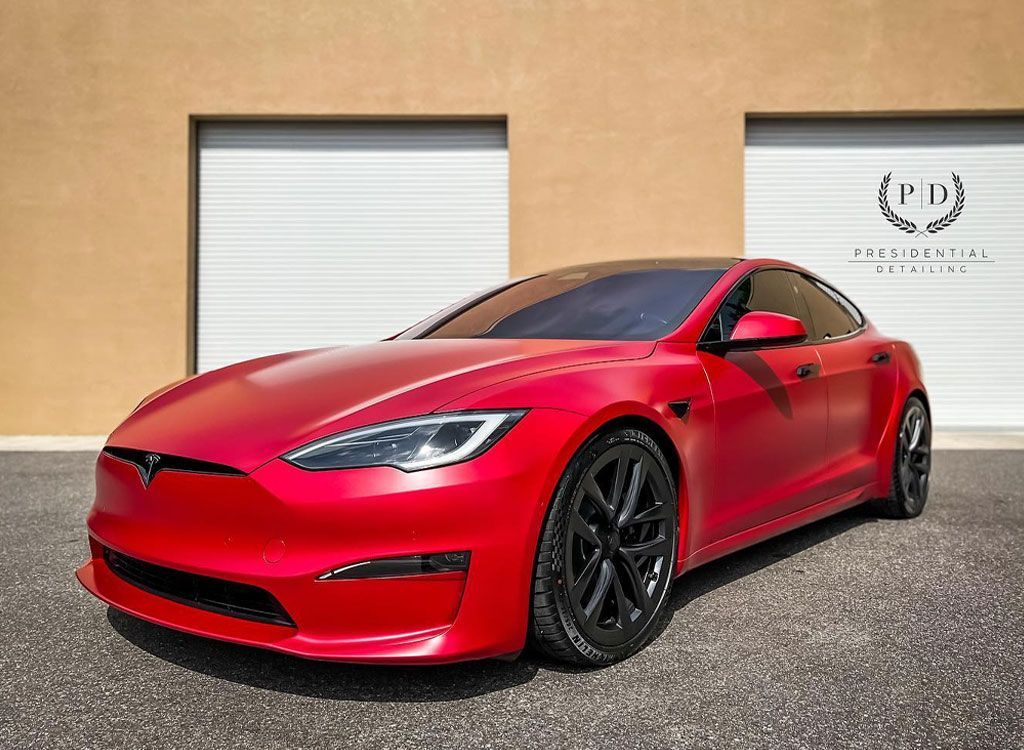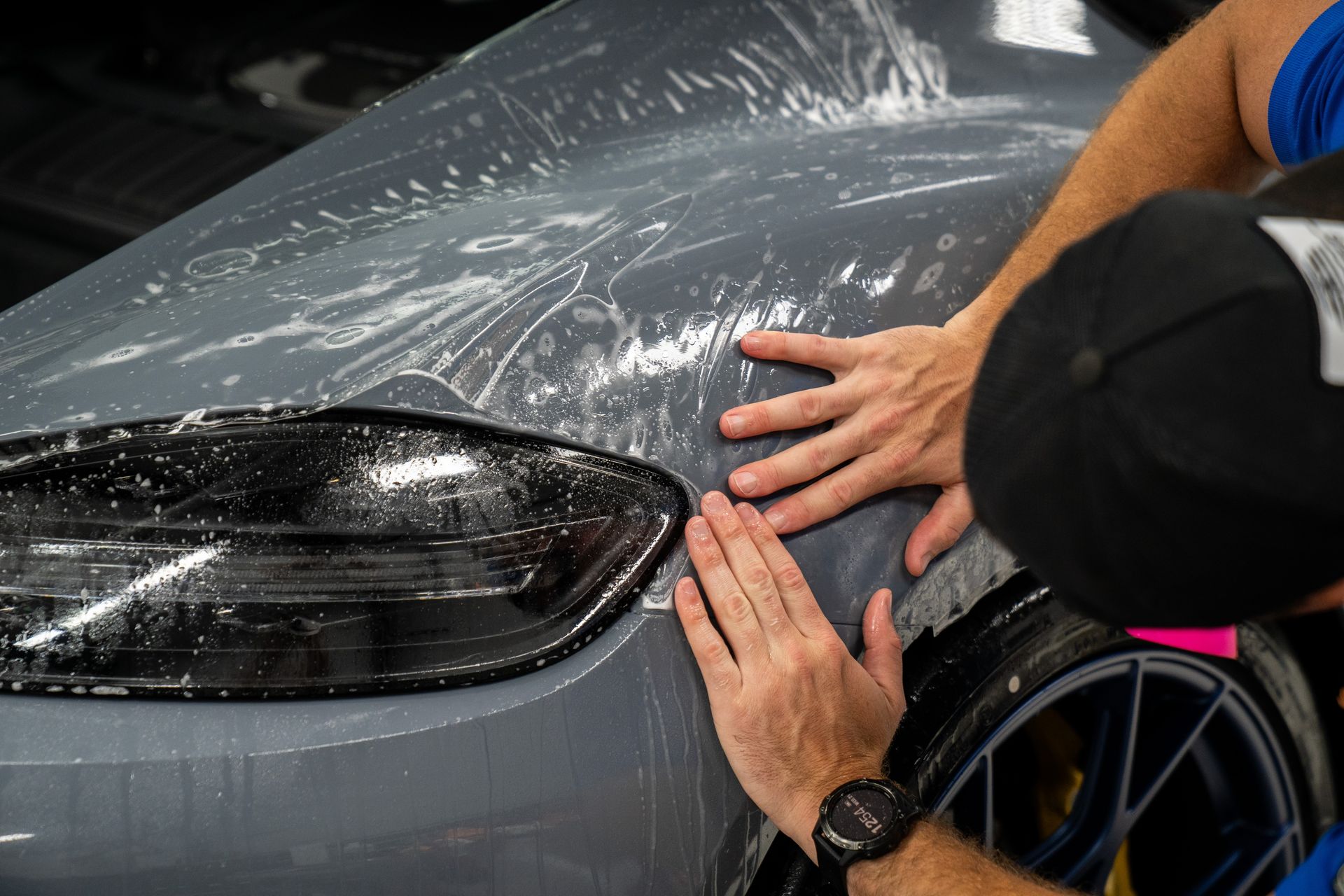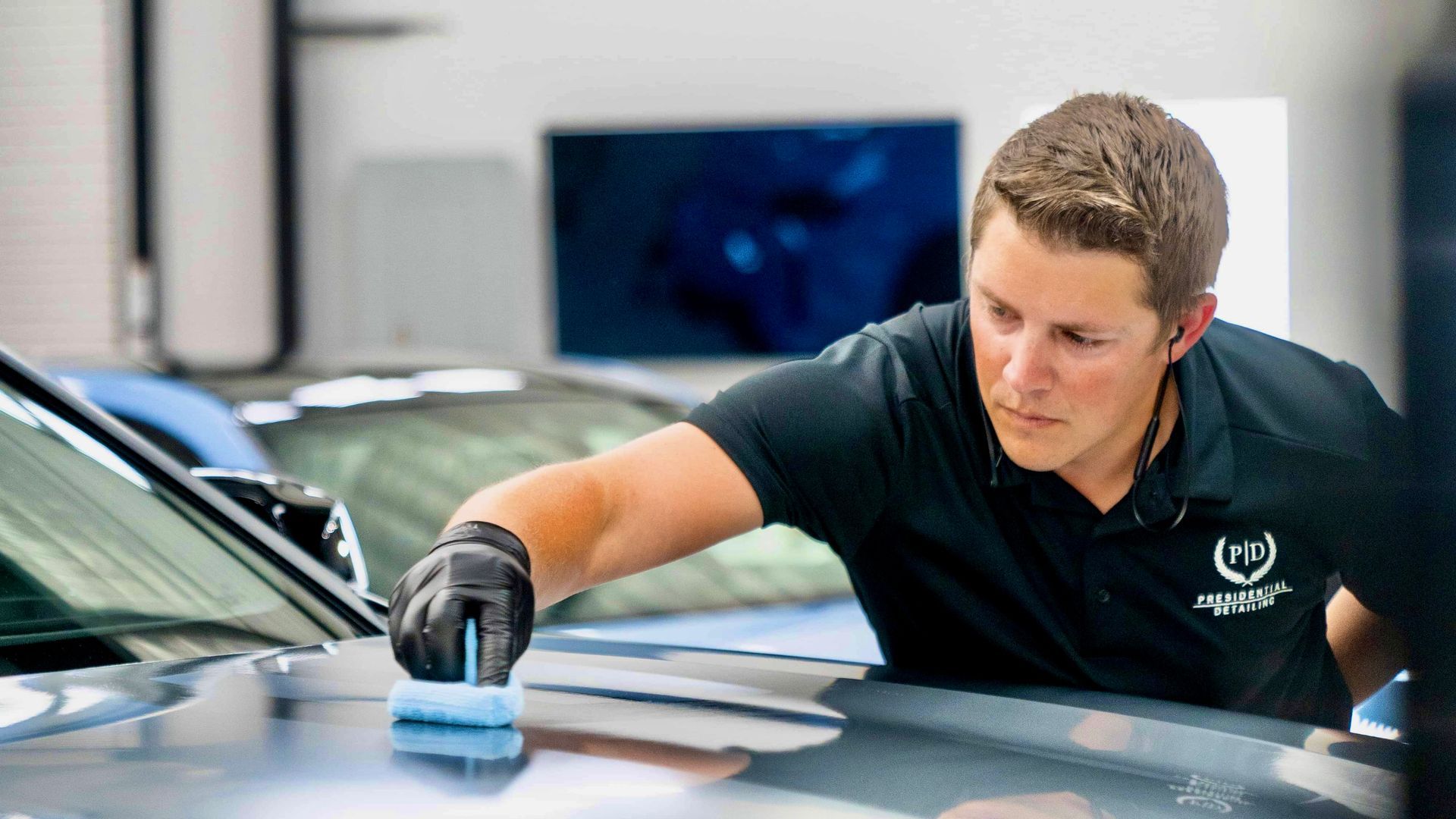PPF Maintenance Tips and Tricks: How to Keep Your Car Protected and Looking New
CALL (813) 723-9679
GET A FREE ESTIMATEThe upkeep of your car's paint protection film is a key step to maintaining its shine and protection. This film empowers your vehicle to withstand harsh elements like pollutants and road debris that can strain its paint job. But did you know that neglecting regular maintenance can lead to rapid wear and tear? This oversight may result in early damage to your car's paint, leading to potentially high-cost repairs. Proper care of the PPF not only bolsters its efficiency but also enhances its appearance, making your vehicle always stand out. Thus, ensuring regular maintenance renders double benefits, extending the vitality of both the PPF and your car's paint job.
Maintaining the integrity of your paint protection film is crucial for preserving the appearance and protective properties of your vehicle's paint. Regularly washing your car using a gentle hand washing method and dedicated car soap designed specifically for clear bras is recommended. Additionally, applying a ceramic coating on top of the film can provide added protection and make maintenance easier. Remember, neglecting PPF maintenance can lead to premature wear and damage to your vehicle's paint.
Importance of Regular PPF Maintenance
Picture this: you're driving down a dusty road, and your car is taking the brunt of all the debris, UV rays, and environmental pollutants. Imagine your paint protection film is a suit of armor that takes the blow instead of your car's precious paint job. Regular upkeep doesn't only maintain the film's performance and appearance; it also functions as a protective barrier against elements like road debris, dust, and pollutants that would otherwise damage the car's paint. This means fewer scratches, swirl marks, and chips preserve that gleaming showroom shine. Just like any protective gear, neglecting regular PPF maintenance can lead to premature wear and tear on the film itself and result in damage to your vehicle's paint. It's akin to skipping regular tune-ups for your car; what seems small at first can snowball into a bigger issue down the road.
Consider this: when we take care of our belongings regularly, they often last longer. Think about how a leather jacket stays beautiful when cleaned and conditioned regularly versus one that's been neglected. The same goes for your paint protection film and car; regular maintenance can save you from premature wear and ensure that your car looks its best for years to come. In essence, by engaging in regular PPF maintenance routines, you're not only ensuring protection for your vehicle but also safeguarding yourself from costly repairs in the future. It's an investment in preserving both the film's efficacy and the integrity of your vehicle’s paint job—a small daily effort for long-term gain.
Effective Cleaning Techniques for Paint Protection Film
When it comes to maintaining your paint protection film, utilizing proper washing techniques is paramount. Regular upkeep is crucial, but using the correct methods and products ensures preservation without inadvertently causing damage.
- Hand Washing Method: The hand washing method is a gentle and effective approach for PPF maintenance. Every 1-2 weeks, using a dedicated car soap specifically designed for clear bras is highly recommended. This specialized soap helps prevent damage to the film's top layer while effectively removing dirt, debris, and other contaminants. It's akin to cleaning delicate china or jewelry - you wouldn't just scrub it with a brush or soap, right? Similarly, using a product specifically made for PPF care ensures that unintended harm is avoided. The gentle hand washing method not only keeps your paint protection film stunningly clean but also ensures that it remains intact without compromising its protective properties.
- Two-Bucket Method: To prevent scratches and swirl marks during cleaning, the two-bucket method stands out as an effective technique for maintaining your paint protection film. This method involves having one bucket containing the soapy solution and another dedicated to rinsing the wash mitt. By doing this, you ensure that dirt and grit are not reapplied onto the PPF, preventing scratches that could occur during cleaning. This method is similar to using separate water buckets when mopping a floor - you wouldn't want to spread the dirt all over again while cleaning, right? The same goes for protecting your clear bra from potential damage during the cleaning process.
- Rinsing Off Loose Dirt: In addition to regular hand washing and utilizing the two-bucket method, rinsing off the paint protection film once a week can prove highly beneficial. This helps remove loose dirt and debris that might have accumulated on the surface, preventing them from embedding into the film over time and causing damage. Just like dusting off your shoes before entering a carpeted area prevents dirt from being ground in, rinsing off loose dirt from your PPF prevents potential harm from impacting its protective abilities.
By implementing these effective cleaning techniques, you're not only ensuring that your PPF retains its pristine appearance but also guaranteeing its longevity and protective capabilities throughout its lifespan on your vehicle.
Best Products to Use for PPF Maintenance
When it comes to protecting your car's paint underneath, high-quality products specifically designed for preserving paint protection film are essential. These specially formulated items play a crucial role in not only maintaining the appearance of the film but also extending its lifespan.
- Dedicated Car Soap: Using a dedicated car soap designed for clear bras is a must-have for anyone looking to maintain their PPF. These soaps are crafted to be gentle on the film's top layer, effectively preventing damage and preserving its integrity. The unique formulation of these soaps ensures that they clean without compromising the protective properties of the paint protection film.
- Microfiber Cloths: For delicate cleaning tasks like cleaning PPF, microfiber cloths are an absolute necessity. These soft cloths are perfect for gentle cleaning without causing any scratches to the paint protection film or leaving behind lint. They are effective for drying the film after washing and for buffing it, revealing a smooth, flawless finish.
- Ceramic Coatings: Incorporating a ceramic coating on top of the film acts as an extra layer of defense, providing additional protection and enhancing the film's longevity. By applying a ceramic coating, you can significantly improve the film's resistance to environmental elements while further safeguarding it from potential damage.
It's crucial to choose products that are compatible with your paint protection film, ensuring that they work harmoniously to provide ultimate preservation and protection. By investing in dedicated car soap, microfiber cloths, and ceramic coatings specifically designed for a clear bra, you're not just maintaining the appearance of your vehicle; you're actively safeguarding its protective properties and longevity. These high-quality products create an effective barrier against potential damage and degradation of the paint protection film, ensuring that your car remains well-protected and looks as good as new.
Prevention and Dealing with PPF Damage
Regular maintenance is crucial to preserving the appearance and protective properties of paint protection film. Whereas regular upkeep prevents scratches, swirl marks, and chips on the PPF, it's essential to be prepared for handling any potential damage.
Applying a Ceramic Coating for Hydrophobic Properties
One effective method to counter minor scratches on your PPF is by applying a ceramic coating. This specialized coating possesses hydrophobic properties that repel water and contaminants, making your vehicle easier to clean and maintain. The ceramic coating enhances the durability of the paint protection film, providing an additional layer of defense against UV rays, bird droppings, and other environmental contaminants. This not only preserves the film's clarity and performance but also boosts the overall aesthetic of your car with a high-gloss finish. By investing in a ceramic coating, you ensure that your vehicle remains in showroom condition, maximizing both its visual appeal and resale value.
Professional Intervention for Severe Damage
In cases where PPF damage is more severe, seeking professional intervention may become necessary. Qualified technicians possess the expertise and tools required to accurately assess the extent of the damage and administer appropriate repair or replacement. Noticing severe damage, such as deep scratches or extensive chipping in your paint protection film, underscores the importance of promptly seeking professional assistance to prevent further deterioration. Ignoring severe damage can jeopardize the protective benefits of the film, potentially requiring more comprehensive repairs. For example, encountering significant rock chip damage on your PPF after an extended highway drive warrants swift professional assistance to restore your vehicle's exterior protection.
Preventive Care Measures for Longevity
Implementing preventive care measures significantly contributes to extending the longevity of your PPF. Regular inspection and maintenance ensure that potential issues are identified early, allowing for timely intervention and resolution. Adhering to expert guidelines for paint protection film care, such as regular washing using a two-bucket method with dedicated car soap and rinsing off loose dirt and debris weekly, actively safeguards your PPF against potential damage. These measures create a protective barrier against road debris, dust, and pollutants, maintaining the appearance and effectiveness of the paint protection film.
Professional PPF Care vs. Do-it-Yourself
Choosing between using a professional service for your PPF maintenance or taking the DIY route has its advantages and drawbacks. Let's examine each option closely to help you make an informed decision.
- Expertise and Equipment: When you choose professional paint protection film care, you benefit from the expertise of professionals who grasp the specific maintenance needs of PPF. These experts have specialized knowledge about preserving the integrity and appearance of your clear bra. They have access to professional-grade equipment that may not be available to consumers for DIY maintenance. This means that professional services can provide meticulous and thorough upkeep that goes beyond regular DIY methods.
- Application of Ceramic Coatings: Another advantage of professional paint protection film care is the application of ceramic coatings, which offer an additional layer of protection on top of the PPF, enhancing its durability and resistance to environmental elements. Professionals are trained in the proper application of ceramic coatings, ensuring even and effective coverage that maximizes the protective properties of the PPF. This added layer further shields the car's paint from potential damage, such as UV rays, dirt, and other environmental pollutants.
- Long-Term Care Recommendations: Professional maintenance services often include personalized recommendations for long-term PPF care tailored to the specific needs of your vehicle and its usage patterns. Maintenance experts can advise on proactive measures to maintain the paint protection film's integrity over time, helping you protect your investment in your vehicle's appearance.
Whether it's choosing expert care or tackling upkeep yourself, understanding these key differences can help you make an informed decision that aligns with your needs, budget, and desired level of care for your paint protection film.
Ensuring Longevity of Your PPF Investment
Your car is a valuable investment, and protecting its exterior is crucial for maintaining its value over time. Applying a paint protection film is one way to shield your vehicle from the rigors of daily use, but it doesn't end there. Regular maintenance is key to extending the lifespan of the PPF and preserving your car's pristine appearance. A clear bra acts as a protective shield against road debris, UV rays, and environmental contaminants, effectively preventing unwanted blemishes on your car's paint job. However, without proper care, the film can become compromised over time, leading to premature wear and potential damage to the underlying paint. This makes regular maintenance essential to ensuring that the PPF continues to provide the intended level of protection.
Imagine having invested in high-quality PPF to keep your car looking new for years to come. However, over time, if neglected, the film starts peeling or showing signs of wear due to a lack of maintenance. Not only does this compromise the protection it offers, but it also affects the overall aesthetics of your car. This emphasizes the significance of regular upkeep for safeguarding your vehicle's appearance and retaining its value. Proper upkeep can protect the car's paint job for years, even for over a decade, enhancing your vehicle's appearance and retaining its resale value. Neglecting paint protection film maintenance can lead to avoidable damage, highlighting the importance of consistently ensuring the durability and effectiveness of the PPF investment.
Regular maintenance serves as a protective barrier against elements like road debris, dust, and pollutants. By neglecting this upkeep, you risk exposing your car's paint to potential scratches, swirl marks, and chips, ultimately affecting its overall aesthetics and diminishing its resale value over time. Moreover, proper maintenance ensures that the PPF maintains its protective properties and continues to uphold its resilience against daily wear and tear. This means that with regular upkeep, you can confidently drive without worrying about potential damage from external factors, knowing that your vehicle's exterior is well-protected. Maintaining a PPF requires attention and care, but the long-term benefits in terms of preserving your car's appearance and value make it a worthwhile investment.
Top-Notch Paint Protection Film Solutions in Clearwater, FL
Presidential Automotive Detailing, the premier provider of
high-quality paint protection film solutions in Clearwater, FL, offers unsurpassed protection for your vehicle's paint. Our expert professionals are committed to preserving the beauty and integrity of your vehicle through precise application and high-quality materials. Say goodbye to scratches, chipping, and environmental damage, and hello to long-lasting protection that preserves your vehicle in perfect condition. Drive with confidence, knowing that your investment is protected from the elements. Don't settle for less than the best—trust Presidential Automotive Detailing with all your paint protection film needs. Schedule an appointment now to see the difference for yourself! Call us at
(813) 723-9679 to get started!
